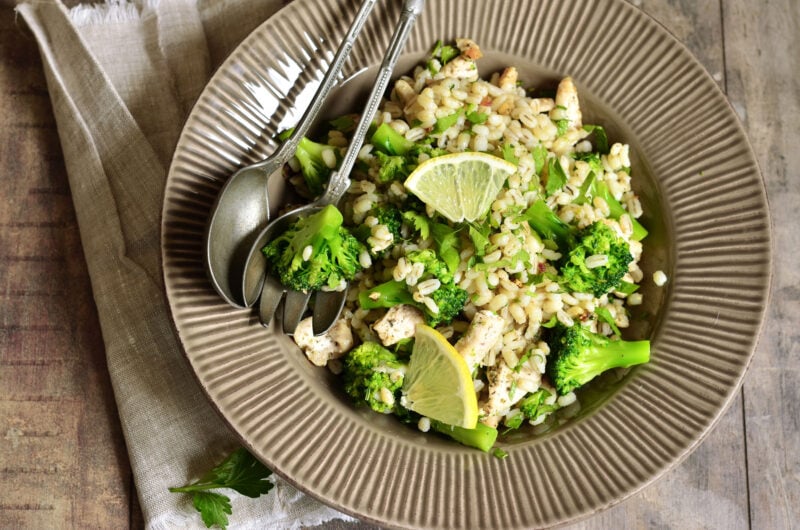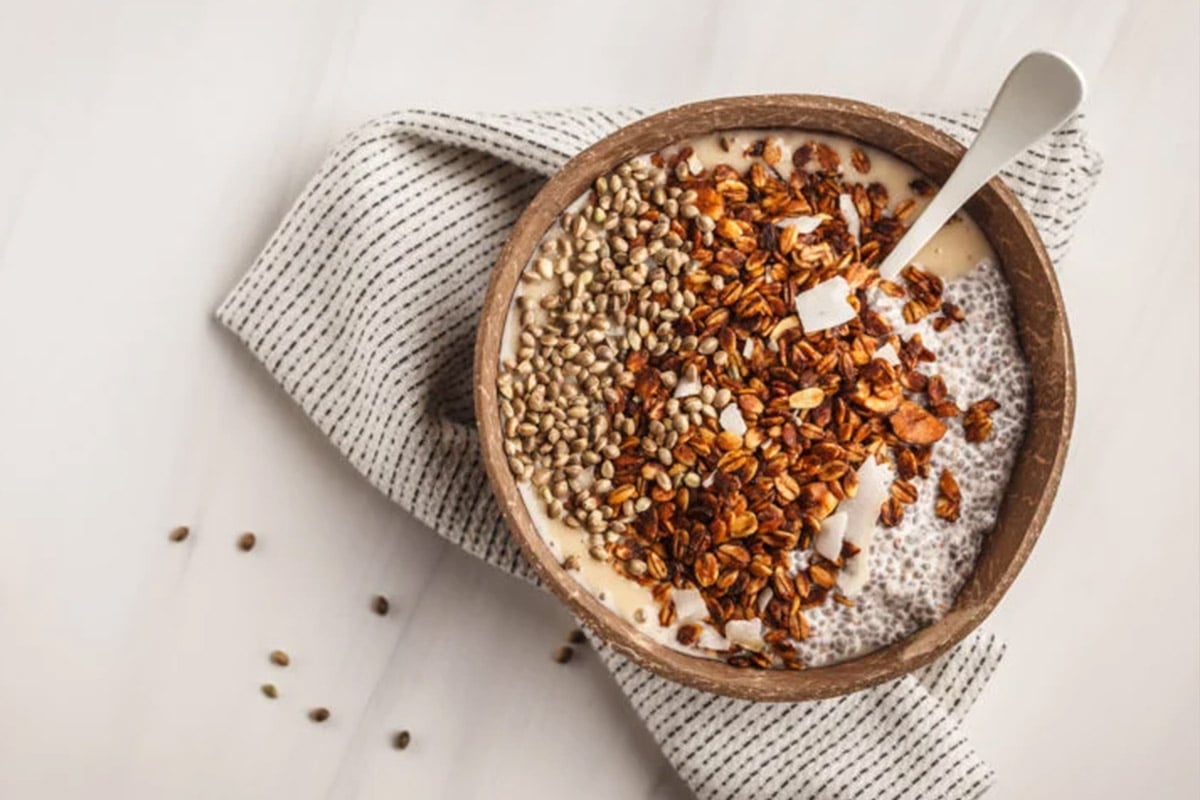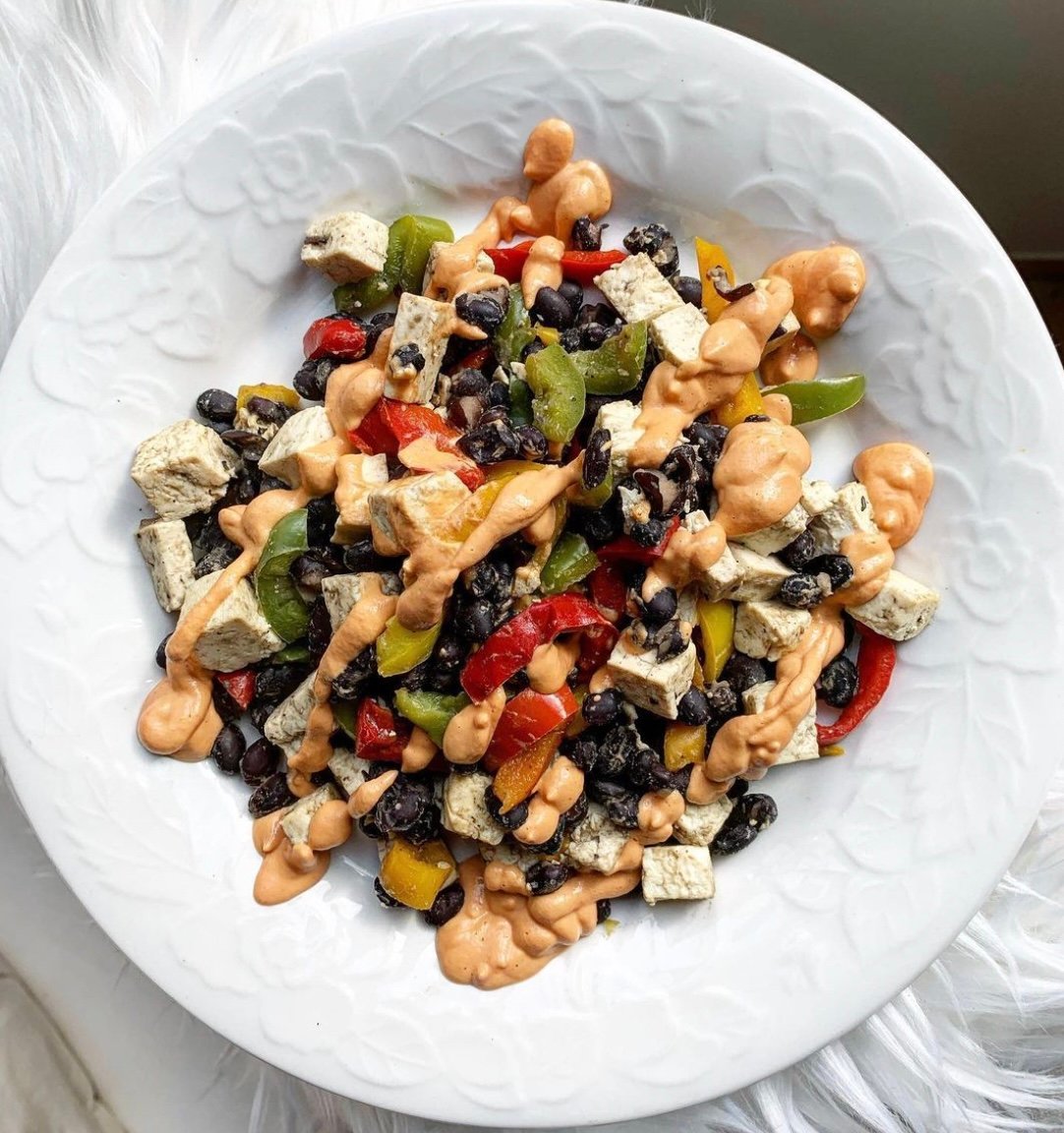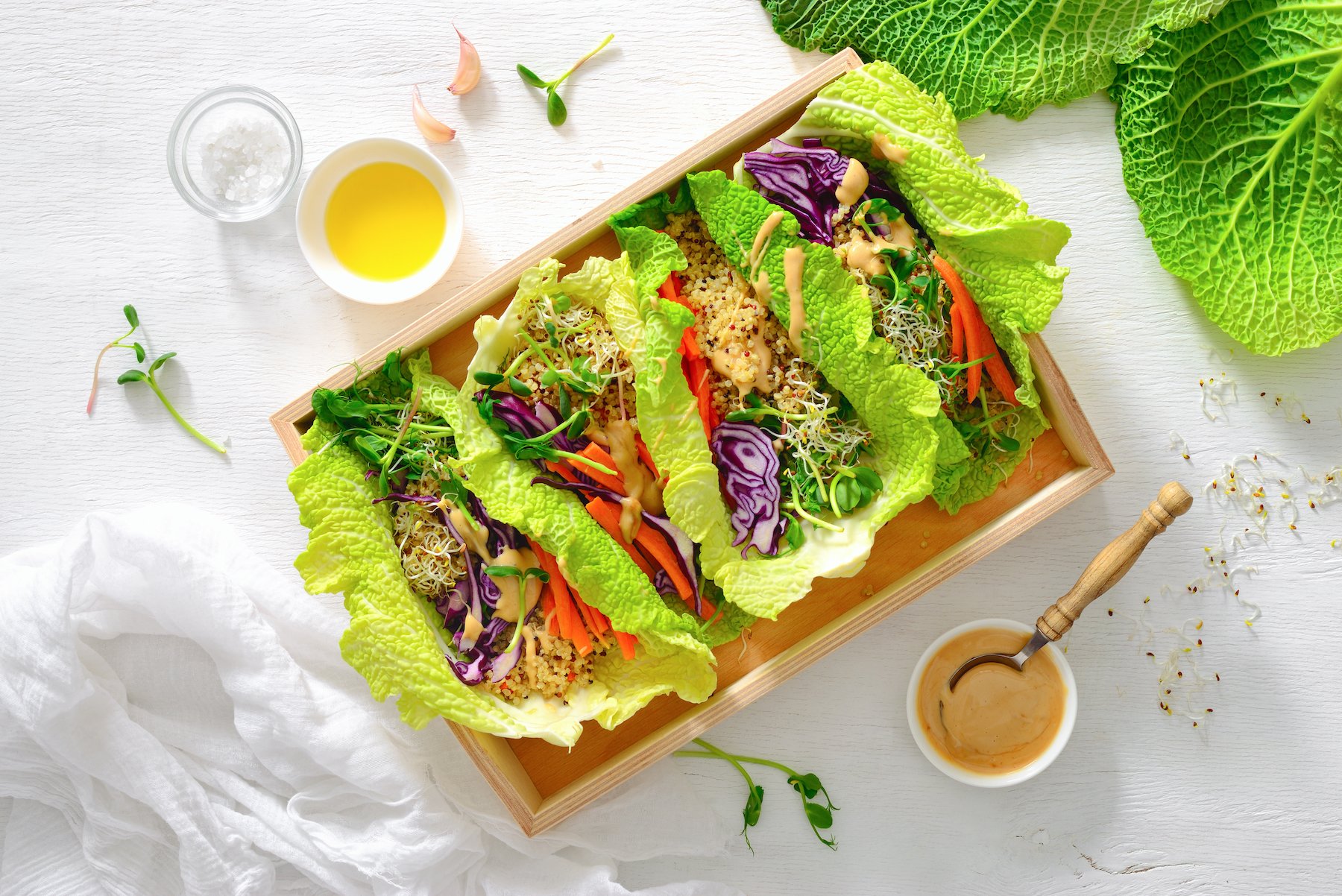It’s challenging to maintain steady blood sugar when eating rice and grains. For example, white (or even brown) rice seems like a healthy choice, but most people find that this staple—high in carbs and low in fiber—can send blood glucose soaring in the short term. And in the long term, eating a lot of white rice can raise the risk for metabolic disorders such as diabetes.
Riced cauliflower is a low-carb alternative, but sometimes it doesn’t measure up when seeking a hearty side or base for your meal. So-called ancient grains, including bulgur, quinoa, and millet, are another possible substitute. These whole grains are reported to have remained unchanged for centuries, though in some cases, the label may be more marketing-driven. (Likewise, don’t get too caught up in the taxonomy here between grains [a catchall for edible cereal-like crops], cereals [generally coming from grass-like plants], and pseudocereals [from non-grass plants]. The categories don’t tell you anything about their nutrition.)
Some research suggests that ancient grains may have an edge when fending off inflammation, but there’s no concrete evidence that they are superior for metabolic health. They still contain a sizable amount of carbs and often affect blood sugar like their modern-day counterparts.
Because ancient grains are whole grains (including pseudocereals), they deliver more fiber and protein than white rice. But, when compared to brown rice, it’s often a draw. Ounce for ounce, brown rice has roughly the same amount of carbs and fiber as many ancient grains, such as Khorasan (sometimes called by a brand name Kamut). That said, each grain and seed has its own nutrient profile that may affect your blood glucose differently.
The bottom line: Ancient grains aren’t a miracle food for your metabolic health, but they’re typically a better choice than white rice. If you want to try them (or if they’re already a staple in your diet), read on to learn the kernels of truth about some common varieties. As with other whole grains, you’ll want to pair them with extra protein and healthy fats—and go for a walk after eating—to help keep your blood sugar level steady.
Why are Refined Grains Unhealthy?
Although white rice is rarely pulverized into flour like wheat, it’s still considered a refined grain. That means it undergoes a process that removes its nutrient-rich components (the bran and germ). This gives the grain a softer texture and longer shelf life, but it also strips away the fiber that helps slow down the glucose absorption from food into your bloodstream.
Without sufficient fiber, the carbs from white rice can cause a jump in blood sugar. According to data from Levels users, a serving of white rice eaten alone spikes glucose by an average of about 50 mg/dL. That’s compared to 37 mg/dL for the same amount of quinoa, an ancient grain. (For context, we usually aim to keep post-meal blood sugar rises under 30 mg/dL.)
Over the long run, these glucose spikes can wreak havoc on your metabolic health. One study found that 25% of people who ate the most white rice were 66 percent more likely to have metabolic syndrome compared to the 24% who at the least. Moreover, another study found that each serving of white rice daily increased the chances of developing Type 2 diabetes by 11 percent.
Swapping white rice and other refined grains for whole grains like ancient grains may be an improvement for some people. Researchers have found that compared to refined grains, whole grains can keep appetite in check, improve insulin sensitivity, and lower inflammation.
Still, ancient grains are a source of carbs, so keep two things in mind:
- Pay attention to your portions. One serving is a half-cup of cooked grains.
- Pair your ancient grains with protein and healthy fats, which can further slow digestion and keep your blood glucose steady.
Bottom line: if grains are an important part of your diet or key to certain meals you love, whole ancient grains are worth trying, but pay attention to your blood sugar response.
What to Know About 9 Popular Ancient Grains
Because everyone’s metabolic response to foods can vary, there’s no one-size-fits-all way to predict how certain grains will affect your blood sugar. But, as a whole, experts often look at a food’s glycemic index and net carbs.
Net carbs are a measure of total carbs minus fiber and sugar alcohols. How net carbs affect blood sugar rises is debated, but, in general, the lower number of net carbs, the smaller the likely jump in glucose.
The glycemic index (GI) is a way to estimate how quickly your glucose will rise after you consume 50 grams of carbs of a particular food. The idea is that higher-GI foods raise your blood glucose more than lower-GI foods. But the way GI is calculated is imperfect because few people eat that amount of carbs from one food by itself in the real world, and glucose responses are highly individual.
Despite their limitations, these numbers can offer insight into how different grains affect your blood sugar. Cooked white rice has a GI of 64–93 (foods 70 and above are considered high-GI foods) and net carbs of 28 per half-cup serving. Cooked brown rice has a GI of 58 and a net carb count of 22 grams per half-cup serving. Consider how the following ancient grains measure up, ranking from the lowest to the highest net carbs.
1. Bulgur
Per serving (½ cup cooked): 76 calories, 17 g carbs, 4 g fiber, 3 g protein
Net carbs: 13 grams
GI score: 46
A staple in Middle Eastern cuisine, bulgur is higher in fiber and lower in calories than most of the other grains and pseudocereals, including rice and quinoa. Because this durum wheat is parboiled before it’s dried and cracked, it cooks in about 10 to 20 minutes.
Try it: Bulgur is best known in tabbouleh, a fresh parsley salad with cucumber, tomatoes, and a simple lemon vinaigrette. Top it with a piece of salmon for a satisfying meal.
2. Quinoa
Per serving (½ cup cooked): 111 calories, 20 g carbs, 3 g fiber, 4 g protein
Net carbs: 17 grams
GI score: 50
Quinoa is grouped as a grain, but it’s technically a pseudocereal. It’s a tiny seed with relatively high fiber and protein compared to other grains. It contains B vitamins, such as riboflavin and B-6, that protect against inflammation. It’s also a good source of minerals, such as magnesium and zinc, that support metabolic health.
Try it: Make a quinoa bowl with vegetables, protein, and DIY vinaigrette. Or pair it with roasted cauliflower, whipped feta, and herb sauce.
3. Khorasan (Kamut)
Per serving (½ cup cooked): 114 calories, 24 g carbs, 4 g fiber, 5 g protein
Net carbs: 20 grams
GI score: 40
Said to be derived from the ancient Egyptian word for wheat, Kamut comes from a strain of wheat called Khorasan wheat. It’s high in antioxidants, and at least one study suggests it may help lower blood sugar levels (though it is still relatively high in carbs). A half-cup serving also contains roughly 10 percent of men’s daily magnesium requirement (15% of women’s), a mineral crucial for metabolic health.
Try it: Kamut’s nutty flavor and chewy texture work well in salads. This kamut salad is loaded with antioxidant-packed pomegranate, chickpeas, and vegetables like cucumber and carrots. Consider mixing in chicken or tuna for more protein.
4. Millet
Per serving (½ cup cooked): 104 calories, 21 g carbs, 1 g fiber, 3 g protein
Net carbs: 20 grams
GI score: 71
Millet looks like birdseed, and for good reason—it’s the main ingredient in many mixes. It contains anti-inflammatory antioxidants but is low in fiber.
Try it: You can serve millet as a side, in a creamy porridge, or in a vegetarian patty atop a spinach salad.
5. Amaranth
Per serving (½ cup cooked): 126 calories, 23 g carbs, 3 g fiber, 5 g protein
Net carbs: 20 grams
GI score: 92.4
Another pseudocereal, amaranth, contains protein, fiber, and antioxidants but qualifies as a high-GI food.
Try it: Amaranth works well in grain bowls and rice recipes. But it’s also often simmered into a porridge-like consistency. Serve it with berries, nut butter, and seeds. Or go savory with avocado, tomatoes, seeds, and spices.
6. Teff
Per serving (½ cup cooked): 127 calories, 25 g carbs, 3.5 g fiber, 5 g protein
Net carbs: 21.5 grams
GI score: 57
This tiny grain (each is about the size of a poppy seed) is a staple in Ethiopia. It’s a top source of iron, serving up 25 percent of men’s daily needs per ½ cup of cooked teff. Teff has an earthy, nutty flavor. Its fine texture makes it a good swap for porridge or polenta when cooked.
Try it: Simmer it over low heat into a creamy polenta. Then top with greens and other non-starchy vegetables and a soft-boiled egg.
7. Freekeh
Per serving (1/4 cup uncooked): 160 calories, 32 g carbs, 7 g fiber, 6 g protein
Net carbs: 25 grams
GI score: 43
This grain is made from the green, immature wheat picked before it becomes fully grown. It’s roasted, giving it a nutty flavor. Popular in the Middle East, freekeh is a good source of iron, fulfilling 25 percent of men’s daily needs. It also has a rice-like consistency but three times the fiber of brown rice.
Try it: Make a quick, fiber-rich fried “rice” with freekeh. Stir-fry the cooked grain with veggies, scrambled eggs, and a lean protein, such as chicken. This version features red pepper and gai lan, a Chinese green, but you can swap in broccoli or broccoli rabe.
8. Barley
Per serving (~½ cup cooked): 140 calories, 35 g carbs, 6 g fiber, 5 g protein
Net carbs: 29 grams
GI score: 28
A type of cereal grain, barley is high in protein and fiber—as long as you read the fine print. A lot of the barley sold in stores and served in restaurants is pearled barley, a type of refined grain. Look for hulled barley, which is minimally processed; only the tough, inedible outer shell is removed, and some of the fibrous bran is left.
Hulled barley is high in beta-glucan, a type of fiber that can help lower blood sugar. One study found that eating oats and barley reduced insulin and blood glucose levels, but barley had the more significant effect—up to a 65 percent drop compared to 36 percent for oats.
Try it: Barley adds a hearty chew to stews and soups. Toss it in a vegetable or mushroom soup.
9. Sorghum
Per serving (½ cup cooked): 105 calories, 33 g carbs, 2.5 g fiber, 3.3 g protein
Net carbs: 30.5 grams
GI score: 61.2
This high-fiber grain is packed with fiber and essential micronutrients for your metabolic health, such as B vitamins and selenium. It’s also rich in phytochemicals, such as flavonoids and phenolic acids, that help reduce inflammation.
Try it: Cook sorghum like rice or pop it like corn to make a puffed snack. Eat that alone, or mix it into nut butter-rich protein balls.
Want to learn more about your metabolic health?
Levels, the health tech company behind this blog, helps people improve their metabolic health by showing how food and lifestyle impact your blood sugar, using continuous glucose monitoring (CGM), along with an app that offers personalized guidance and helps you build healthy habits. Click here to learn more about Levels.








